IEEE Std 802.11r-2008, Front Cover
Title Page
Abstract/Keywords
Introduction
Notice to users
Laws and regulations
Copyrights
Updating of IEEE documents
Errata
Interpretations
Patents
Participants
Contents
List of figures
List of tables
Important Notice
2. Normative references
3. Definitions
4. Abbreviations and acronyms
5. General description
5.2 Components of the IEEE 802.11 architecture
5.2.3 Distribution system (DS) concepts
5.2.3.2 Robust security network association (RSNA)
5.4 Overview of the services
5.4.2 Services that support the distribution services
5.4.2.1 Mobility types
5.4.3 Access control and data confidentiality services
5.4.3.1 Authentication
5.4.3.4 Key management
5.4.3.7 Fast BSS transition
5.8 IEEE Std 802.11 and IEEE Std 802.1X-2004
5.8.1 IEEE 802.11 usage of IEEE Std 802.1X-2004
5.8.2 Infrastructure functional model overview
5.8.2.1 Authentication and key management (AKM) operations with Authentication Server (AS)
6. Medium access control (MAC) service definition
6.1 Overview of MAC services
6.1.2 Security services
7. Frame formats
7.2 Format of individual frame types
7.2.3 Management frames
7.2.3.1 Beacon frame format
7.2.3.4 Association Request frame format
7.2.3.5 Association Response frame format
7.2.3.6 Reassociation Request frame format
7.2.3.7 Reassociation Response frame format
7.2.3.9 Probe Response frame format
7.2.3.10 Authentication frame format
7.3 Management frame body components
7.3.1 Fields that are not information elements
7.3.1.1 Authentication Algorithm Number field
7.3.1.9 Status Code field
7.3.1.11 Action field
7.3.2 Information elements
7.3.2.25 RSN information element (RSNIE)
7.3.2.25.2 AKM suites
7.3.2.25.4 PMKID
7.3.2.37 Neighbor Report element
7.3.2.47 Mobility domain information element (MDIE)
7.3.2.48 Fast BSS transition information element (FTIE)
7.3.2.49 Timeout Interval information element (TIE)
7.3.2.50 RIC Data information element (RDIE)
7.3.2.51 RIC Descriptor information element
7.4 Action frame format details
7.4.8 FT Action frame details
7.4.8.1 FT Request frame
7.4.8.2 FT Response frame
7.4.8.3 FT Confirm frame
7.4.8.4 FT Ack frame
8. Security
8.4 RSNA Security association management
8.4.1 Security associations
8.4.1.1 Security association definitions
8.4.1.1.1a PMK-R0 security association
8.4.1.1.1b PMK-R1 security association
8.4.1.1.2 PTKSA
8.4.6 RSNA authentication in an ESS
8.4.6.1 Preauthentication and RSNA key management
8.4.10 RSNA security association termination
8.5 Keys and key distribution
8.5.1 Key hierarchy
8.5.1.5 FT key hierarchy
8.5.1.5.1 Overview
8.5.1.5.2 Key derivation function (KDF)
8.5.1.5.3 PMK-R0
8.5.1.5.4 PMK-R1
8.5.1.5.5 PTK
8.5.2 EAPOL-Key frames
8.5.2.1 EAPOL-Key frame notation
8.5.3 4-Way Handshake
8.5.3.1 4-Way Handshake Message 1
8.5.3.2 4-Way Handshake Message 2
8.5.3.3 4-Way Handshake Message 3
8.5.3.4 4-Way Handshake Message 4
8.5.4 Group Key Handshake
8.5.4.1 Group Key Handshake Message 1
8.5.4.2 Group Key Handshake Message 2
8.5.8 PeerKey Handshake
8.5.8.1 SMK Handshake
8.5.8.1.1 SMK Handshake Message 1
8.5.8.1.2 SMK Handshake Message 2
8.5.8.1.3 SMK Handshake Message 3
8.5.8.1.4 SMK Handshake Message 4
8.5.8.1.5 SMK Handshake Message 5
8.5.8.3 STKSA rekeying
8.5.8.4 Error reporting
10. Layer management
10.3 MLME SAP interface
10.3.4 Authenticate
10.3.4.1 MLME-AUTHENTICATE.request
10.3.4.1.2 Semantics of the service primitive
10.3.4.2 MLME-AUTHENTICATE.confirm
10.3.4.2.2 Semantics of the service primitive
10.3.4.3 MLME-AUTHENTICATE.indication
10.3.4.3.2 Semantics of the service primitive
10.3.4.4 MLME-AUTHENTICATE.response
10.3.4.4.2 Semantics of the service primitive
10.3.6 Associate
10.3.6.1 MLME-ASSOCIATE.request
10.3.6.1.2 Semantics of the service primitive
10.3.6.2 MLME-ASSOCIATE.confirm
10.3.6.2.2 Semantics of the service primitive
10.3.6.3 MLME-ASSOCIATE.indication
10.3.6.3.2 Semantics of the service primitive
10.3.6.4 MLME-ASSOCIATE.response
10.3.6.4.2 Semantics of the service primitive
10.3.7 Reassociate
10.3.7.1 MLME-REASSOCIATE.request
10.3.7.1.2 Semantics of the service primitive
10.3.7.2 MLME-REASSOCIATE.confirm
10.3.7.2.2 Semantics of the service primitive
10.3.7.3 MLME-REASSOCIATE.indication
10.3.7.3.2 Semantics of the service primitive
10.3.7.4 MLME-REASSOCIATE.response
10.3.7.4.2 Semantics of the service primitive
10.3.33 MLME SAP interface for resource request
10.3.33.1 MLME-RESOURCE_REQUEST.request
10.3.33.1.1 Function
10.3.33.1.2 Semantics of the service primitive
10.3.33.1.3 When generated
10.3.33.1.4 Effect of receipt
10.3.33.2 MLME-RESOURCE_REQUEST.indication
10.3.33.2.1 Function
10.3.33.2.2 Semantics of the service primitive
10.3.33.2.3 When generated
10.3.33.2.4 Effect of receipt
10.3.33.3 MLME-RESOURCE_REQUEST.response
10.3.33.3.1 Function
10.3.33.3.2 Semantics of the service primitive
10.3.33.3.3 When generated
10.3.33.3.4 Effect of receipt
10.3.33.4 MLME-RESOURCE_REQUEST.confirm
10.3.33.4.1 Function
10.3.33.4.2 Semantics of the service primitive
10.3.33.4.3 When generated
10.3.33.4.4 Effect of receipt
10.3.33.5 MLME-RESOURCE_REQUEST_LOCAL.request
10.3.33.5.1 Function
10.3.33.5.2 Semantics of the service primitive
10.3.33.5.3 When generated
10.3.33.5.4 Effect of receipt
10.3.33.6 MLME-RESOURCE_REQUEST_LOCAL.confirm
10.3.33.6.1 Function
10.3.33.6.2 Semantics of the service primitive
10.3.33.6.3 When generated
10.3.33.6.4 Effect of receipt
10.3.34 MLME SAP interface for remote requests
10.3.34.1 MLME-REMOTE_REQUEST.request
10.3.34.1.1 Function
10.3.34.1.2 Semantics of the service primitive
10.3.34.1.3 When generated
10.3.34.1.4 Effect of receipt
10.3.34.2 MLME-REMOTE_REQUEST.indication
10.3.34.2.1 Function
10.3.34.2.2 Semantics of the service primitive
10.3.34.2.3 When generated
10.3.34.2.4 Effect of receipt
10.3.34.3 MLME-REMOTE_REQUEST.confirm
10.3.34.3.1 Function
10.3.34.3.2 Semantics of the service primitive
10.3.34.3.3 When generated
10.3.34.3.4 Effect of receipt
11. MLME
11.3 STA authentication and association
11.3.1 Authentication and deauthentication
11.3.1.1 Authentication-originating STA
11.3.1.2 Authentication-destination STA
11.3.2 Association, reassociation, and disassociation
11.3.2.3 STA reassociation procedures
11.3.2.4 AP reassociation procedures
11.4 Traffic stream (TS) operation
11.4.1 Introduction
11.4.3 TS lifecycle
11.4.4a TS setup by resource request during a fast BSS transition
11A. Fast BSS transition
11A.1 Overview
11A.2 Key holders
11A.2.1 Introduction
11A.2.2 Authenticator key holders
11A.2.3 Supplicant key holders
11A.3 Capability and policy advertisement
11A.4 FT initial mobility domain association
11A.4.1 Overview
11A.4.2 FT initial mobility domain association in an RSN
11A.4.3 FT initial mobility domain association in a non-RSN
11A.5 FT Protocol
11A.5.1 Overview
11A.5.2 Over-the-air FT Protocol authentication in an RSN
11A.5.3 Over-the-DS FT Protocol authentication in an RSN
11A.5.4 Over-the-air FT Protocol authentication in a non-RSN
11A.5.5 Over-the-DS FT Protocol authentication in a non-RSN
11A.6 FT Resource Request Protocol
11A.6.1 Overview
11A.6.2 Over-the-air fast BSS transition with resource request
11A.6.3 Over-the-DS fast BSS transition with resource request
11A.7 FT reassociation
11A.7.1 FT reassociation in an RSN
11A.7.2 FT reassociation in a non-RSN
11A.8 FT authentication sequence
11A.8.1 Overview
11A.8.2 FT authentication sequence: contents of first message
11A.8.3 FT authentication sequence: contents of second message
11A.8.4 FT authentication sequence: contents of third message
11A.8.5 FT authentication sequence: contents of fourth message
11A.9 FT security architecture state machines
11A.9.1 Introduction
11A.9.2 R0KH state machine
11A.9.2.1 R0KH state machine states
11A.9.2.2 R0KH state machine variables
11A.9.2.3 R0KH state machine procedures
11A.9.3 R1KH state machine
11A.9.3.1 R1KH state machine states
11A.9.3.2 R1KH state machine variables
11A.9.3.3 R1KH state machine procedures
11A.9.4 S0KH state machine
11A.9.4.1 S0KH state machine states
11A.9.4.2 S0KH state machine variables
11A.9.4.3 S0KH state machine procedures
11A.9.5 S1KH state machine
11A.9.5.1 S1KH state machine states
11A.9.5.2 S1KH state machine variables
11A.9.5.3 S1KH state machine procedures
11A.10 Remote request broker (RRB) communication
11A.10.1 Overview
11A.10.2 Remote request broker (RRB)
11A.10.3 Remote Request/Response frame definition
11A.11 Resource request procedures
11A.11.1 General
11A.11.2 Resource information container (RIC)
11A.11.3 Creation and handling of a resource request
11A.11.3.1 STA procedures
11A.11.3.2 AP procedures
Annex A (normative) Protocol Implementation Conformance Statement (PICS) proforma
Annex D (normative) ASN.1 encoding of the MAC and PHY MIB
Annex Q (normative) ASN.1 encoding of the RRM MIB


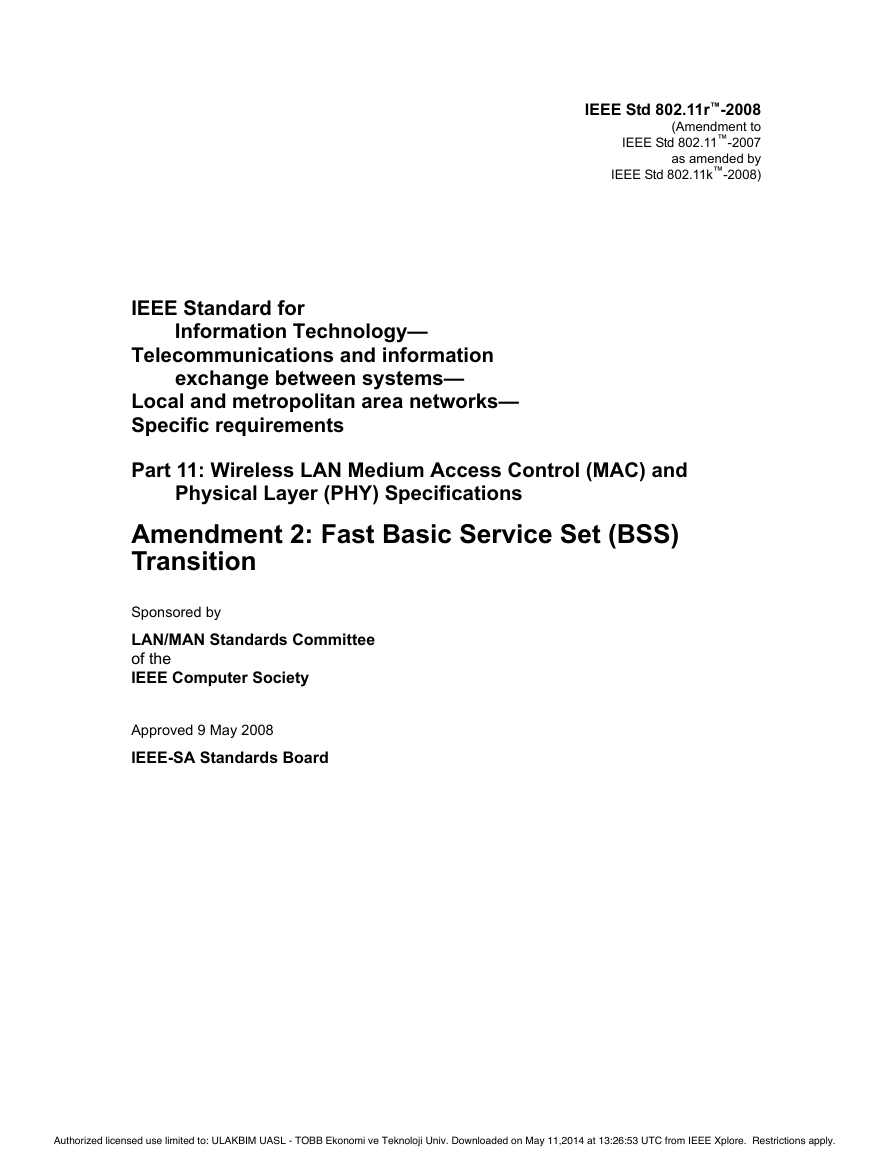
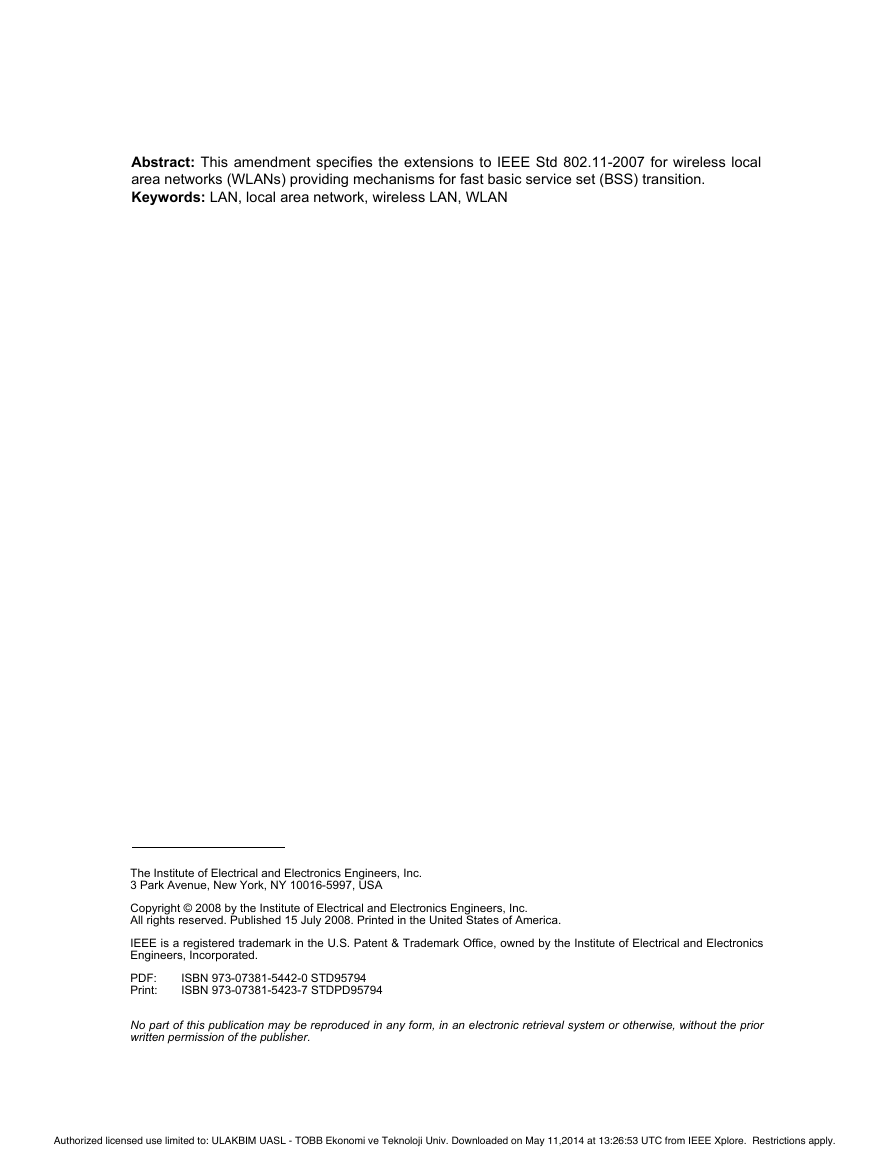
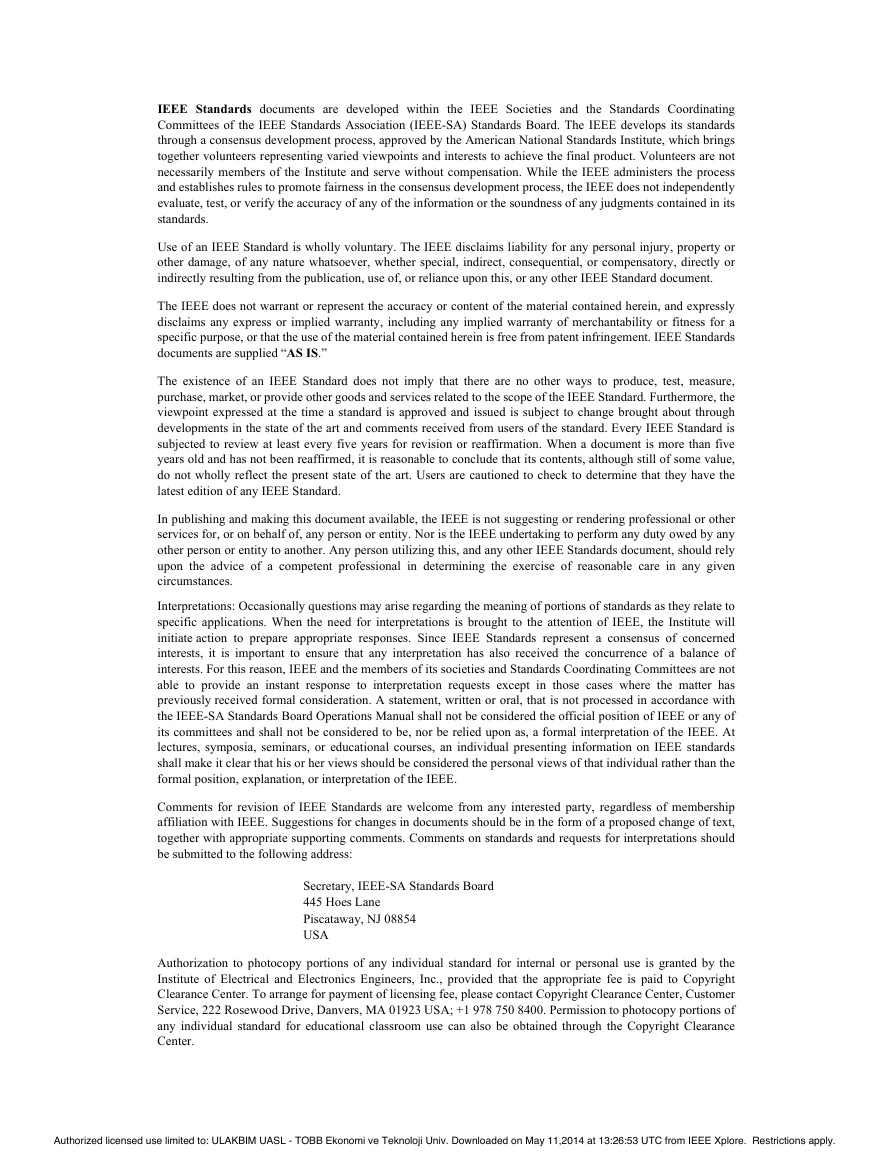
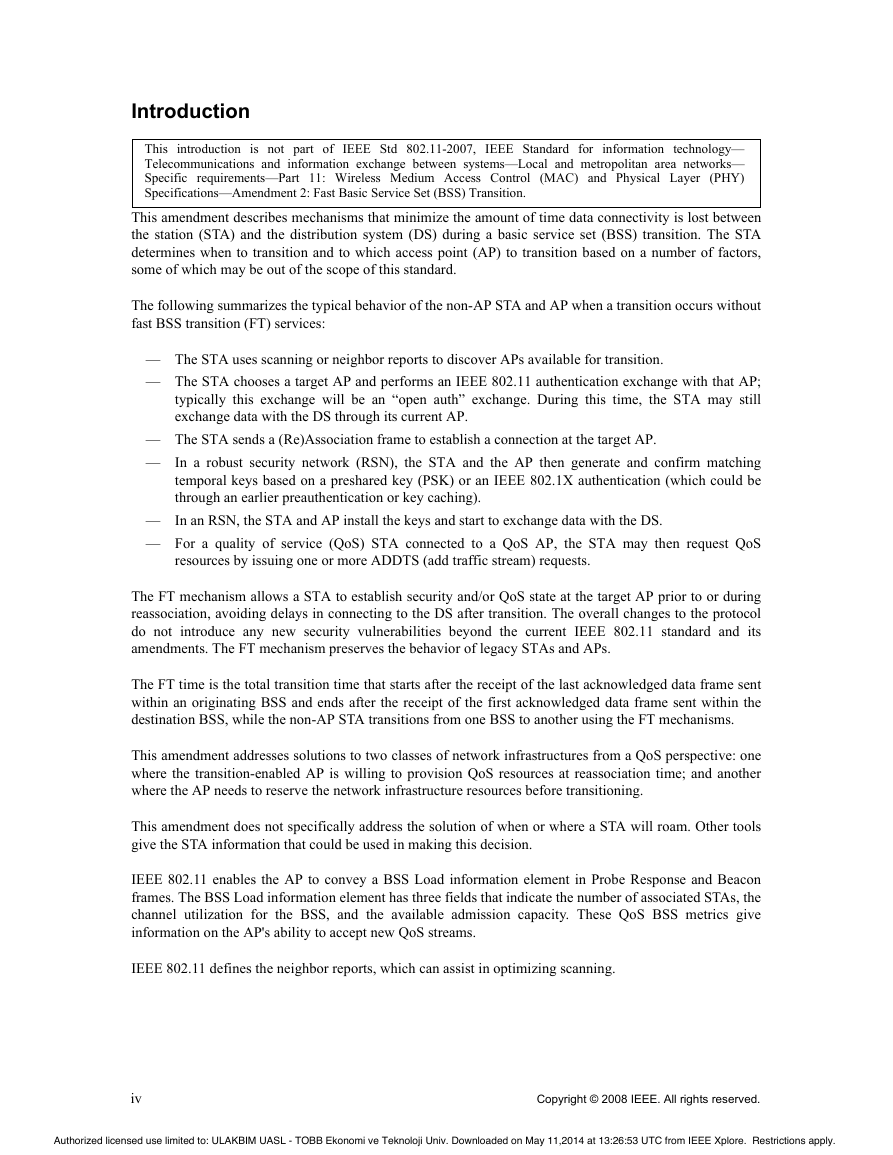

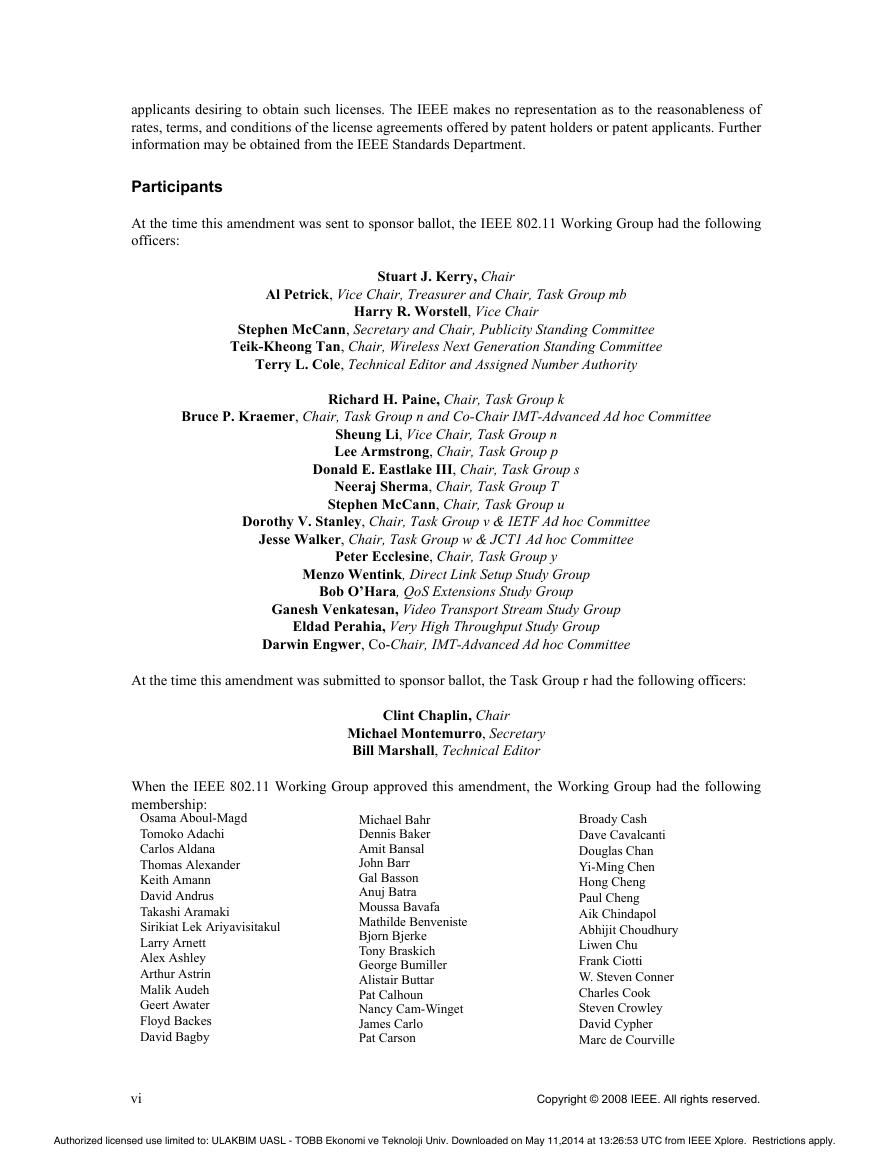








 2023年江西萍乡中考道德与法治真题及答案.doc
2023年江西萍乡中考道德与法治真题及答案.doc 2012年重庆南川中考生物真题及答案.doc
2012年重庆南川中考生物真题及答案.doc 2013年江西师范大学地理学综合及文艺理论基础考研真题.doc
2013年江西师范大学地理学综合及文艺理论基础考研真题.doc 2020年四川甘孜小升初语文真题及答案I卷.doc
2020年四川甘孜小升初语文真题及答案I卷.doc 2020年注册岩土工程师专业基础考试真题及答案.doc
2020年注册岩土工程师专业基础考试真题及答案.doc 2023-2024学年福建省厦门市九年级上学期数学月考试题及答案.doc
2023-2024学年福建省厦门市九年级上学期数学月考试题及答案.doc 2021-2022学年辽宁省沈阳市大东区九年级上学期语文期末试题及答案.doc
2021-2022学年辽宁省沈阳市大东区九年级上学期语文期末试题及答案.doc 2022-2023学年北京东城区初三第一学期物理期末试卷及答案.doc
2022-2023学年北京东城区初三第一学期物理期末试卷及答案.doc 2018上半年江西教师资格初中地理学科知识与教学能力真题及答案.doc
2018上半年江西教师资格初中地理学科知识与教学能力真题及答案.doc 2012年河北国家公务员申论考试真题及答案-省级.doc
2012年河北国家公务员申论考试真题及答案-省级.doc 2020-2021学年江苏省扬州市江都区邵樊片九年级上学期数学第一次质量检测试题及答案.doc
2020-2021学年江苏省扬州市江都区邵樊片九年级上学期数学第一次质量检测试题及答案.doc 2022下半年黑龙江教师资格证中学综合素质真题及答案.doc
2022下半年黑龙江教师资格证中学综合素质真题及答案.doc